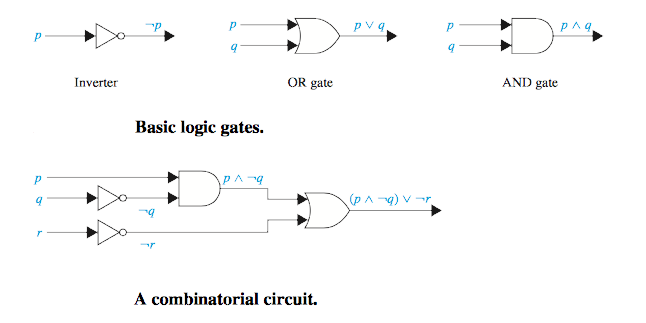

Logic has many important applications to mathematics, computer science, and other disciplines:
Example:
"You will pass this course only if you read the material and
do the problems."
p = "You will pass this course."
r = "Read the material."
d = "Do the problems."
Translation: p ⇔ r ∧ d
Our textbook makes the following claim:
Translating sentences in natural language (such as English) into logical expressions is an essential part of specifying both hardware and software systems. System and software engineers take requirements in natural language and produce precise and unambiguous specifications that can be used as the basis for system development.
This claim is simply not true when it comes to software development: very little real-world development takes place by trying to first formally specify all requirements; when that is attempted, it rarely works.
Searches of things like the web, or large databses, such as our
library's catalog, often can be done using logical operators.
Example: Mexico AND university -New
Searches Google for pages containing "Mexico" and "university"
but not "New".

Propositional logic can be applied to the design of computer hardware. A logic circuit (or digital circuit) receives input signals p1, p2, . . . , pn, each a bit [either 0 (off) or 1 (on)], and produces output signals s1, s2, . . . , sn, each a bit. In this section we only treat logic circuits with a single output signal.
1. a; 2. c; 3. a; 4. b; 5. c;